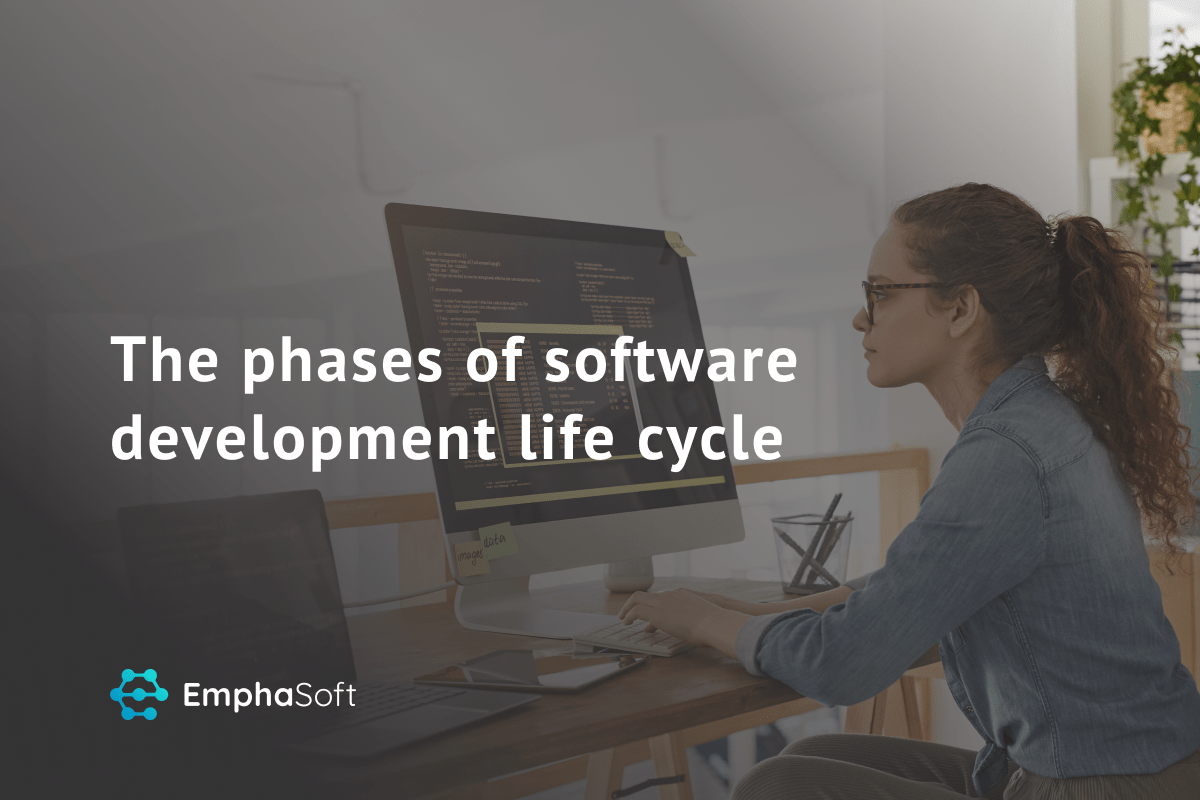In our digital age, software products are introduced daily in hopes of becoming the new unicorns and win over the hearts of millions of global users.
Yet, not every company manages to create something that is innovative and valuable to the end-user. Some don’t even manage to build a solution that works well.
Why is it that one software startup wins and another fails? More often than not, the reason behind startup’s success is not a unique talent or idea but a well-designed process that enables the project team to create top-notch solutions. One of the processes anyone starting a software company can benefit from is the software development life cycle.
What is the software development life cycle?
The software development life cycle (SDLC) is a framework for optimised software development.
SDLC structures the entire process, helping the team navigate the project process to create high-quality deliverables within budget and required timeframes while satisfying customers and stakeholders.
Phases of software development life cycle
Now that we’ve identified what the software development life cycle means, let’s look at its main phases (or stages) that together create an optimised and streamlined workflow.
Requirement identification
First things first, one cannot develop a premium product that exceeds expectations without understanding what problems this product should solve.
To identify requirements correctly, the project team needs to talk with clients and gather their feedback and insight on the problem. Key stakeholders should also be interviewed if they are not the end-user of the future product.
In addition to speaking with the clients and stakeholders, it is important to run market research and identify:
- Existing solutions provided by the competition.
- Where those solutions are lacking and where they excel.
- All target audiences that can benefit from the product.
- Additional pains of clients, not identified through interviews.
If there are no solutions on the market, it is important to investigate why that's the case. Sometimes, if there are no existing products that address a certain pain, it is because there are hidden difficulties (such as regulation or cost) that level out any potential profit.
Design
Once the requirements are clear, it is time to start envisioning the future product.
With software development, design can refer to frontend (visuals of applications) or backend (architecture of the software). The design phase often includes MVP software development where the project team creates the prototype that is reviewed by clients and stakeholders before the team can proceed to full-on development.
MVP means a minimal viable product and it is a very basic version of the product that includes only core functionality. MVPs, as the name suggests, should take minimal time to be created. Once finished, they should be shared with clients immediately to gather feedback and make changes if necessary.
An MVP does not need to be fully functional, but it has to be somewhat interactive to let end-users get a feel for what using this solution will be like.
Development
The development phase is when the implementation of the future solution starts.
Here the development team starts gradual software development and creates all features and functionalities that were agreed upon during stage one while implementing the design approved in stage two.
Developing software for startups can take extra long if there are no experienced coders and project managers with leadership skills on the team. Sometimes, a specialist with niche technology knowledge is required. Hiring and onboarding these specialists can take a long time.
The development process goes faster if there are clear timelines in place that the team can reference. Another trick is to set milestones in addition to goals that the team can strive to achieve and then celebrate their progress.
Testing
Depending on the project management methodology, testing can be a separate phase or a part of the development process.
Agile and Scrum teams, for example, incorporate smaller development cycles where they build a number of features, test them, and only then proceed to the next. Waterfall, on other hand, requires the team to be fully done with development before testing can happen.
Either way, testing is a vital part of the process. It ensures there are no bugs or issues in the product, and users will experience no disruption while using the solution.
There are many types of tests out there, for example:
- Unit testing
- Integration testing
- Usability testing
- Performance testing
- Security testing
Teams should strive to conduct all types of testing for best results.
Release
Release (or deployment) of the product happens after the testing is finalised and all issues are resolved. That’s when the product is polished and ready to be made available to end-users.
Depending on the company’s policy, the product can be released for everyone or to a small group of clients first. If the second scenario is used, the limited number of users given the solution tests it and provides feedback to the team.
The feedback is used to eliminate any issues before fully rolling out the solution. No matter how many tests the company performs, and how many internal experts review the product before it’s released, little things can come up that only clients are able to spot.
Maintenance
The life cycle doesn’t end with product release.
Maintenance is the final phase and it can last for years until the product undergoes a major upgrade or is decommissioned. Maintenance involves minor bug fixes, new feature releases, additional platform support, and updates to meet the latest market demands in terms of speed and security.
Final thoughts
Software development for startups is especially tricky. Often founders have little to no experience in the process, and they make a lot of mistakes along the way. Frameworks and tools for startups, such as software development life cycle, can ease the workflow and help avoid delays and downtimes.
Another route for startups is to outsource software development to a professional software development company, such as Emphasoft. Outsourcing can be a difficult decision because it means letting go of control and entrusting the most important part of the business to someone else. However, if you work with an experienced partner with a good reputation, they can save your startup resources and create powerful products much faster than you would be able to.
Read next: Software Development For SaaS Companies









 Schedule a Discovery Call
Schedule a Discovery Call Schedule Call
Schedule Call